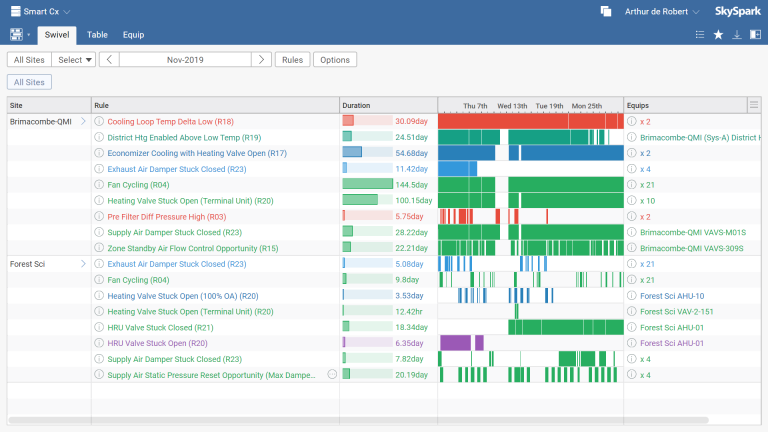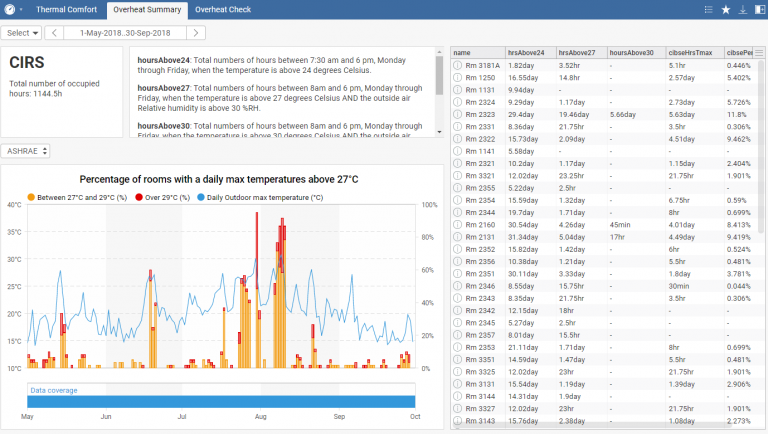Access to Big Data
In every building on campus, there are hundreds of sensors measuring temperature, pressure, speed, and all other parameters necessary to control the building’s HVAC systems. The BMS systems are generally not designed to store historical data, so most of the data recorded by sensors were previously lost. With Skyspark, accessing the critical information required for energy conservation has never been so easy.
UBC’s Campus as a Living Lab (CLL) & research support.
Skyspark benefits the Campus as a Living Lab initiative by providing valuable data to UBC’s research community in the fields of data science, building science, engineering and sustainability. For example, Skyspark data has been used as part of a PhD student research project, Analysis of Campus Water Base Flows to conduct a comprehensive study of buildings water use on campus.
Skyspark also supports the UBC Urban Data Lab (UDL) in their efforts to create an online portal for sustainability data at UBC. The diagram below shows how Skyspark feeds in the UDL data platform.

Figure 1: The Urban Data Lab data architecture
Fault Detection
Skyspark opens new possibilities for energy conservations and HVAC operation. Its database architecture is specifically designed to handle a large amount of time series data and a detailed semantic metadata model. It allows us to detect when the measures we implement fail in near real-time, deploy fault detection rules, optimize the operation of UBC’s District Energy System based on real-time building loads, and predict buildings energy consumption more accurately.
Through partnership with BC Hydro’s Continuous Optimization Program, our team runs a real time energy management pilot to run fault detection rules in Skyspark that identify energy conservation opportunities. The diagram below gives an example of issues found during the fault detection pilot.

Figure 2: Skyspark Fault Detection Tool
Custom Applications
Our approach to developing the program in-house allows more flexibility and autonomy in how we manage the data, as well as increase the breadth and complexity of inquiries that can be asked, and solutions provided. Institutions would typically subcontract custom application development and data integration to consultants, or purchase a more turn-key software solution. The diagram below shows some of the custom applications we developed for specific needs.

Figure 3: Custom applications in Skyspark
Thermal Comfort Custom Application.
The thermal comfort app is one example of a custom application. It allows us to better understand how weather impacts comfort depending on the building’s cooling system, and how we should be directing new construction on campus to future proof buildings in a warming climate. The diagram below shows a screenshot of the thermal comport app in Skypark measuring how buildings perform on different thermal comfort standards.

Figure 4: The Thermal Comfort app in Skyspark, a tool to measure thermal comfort on campus